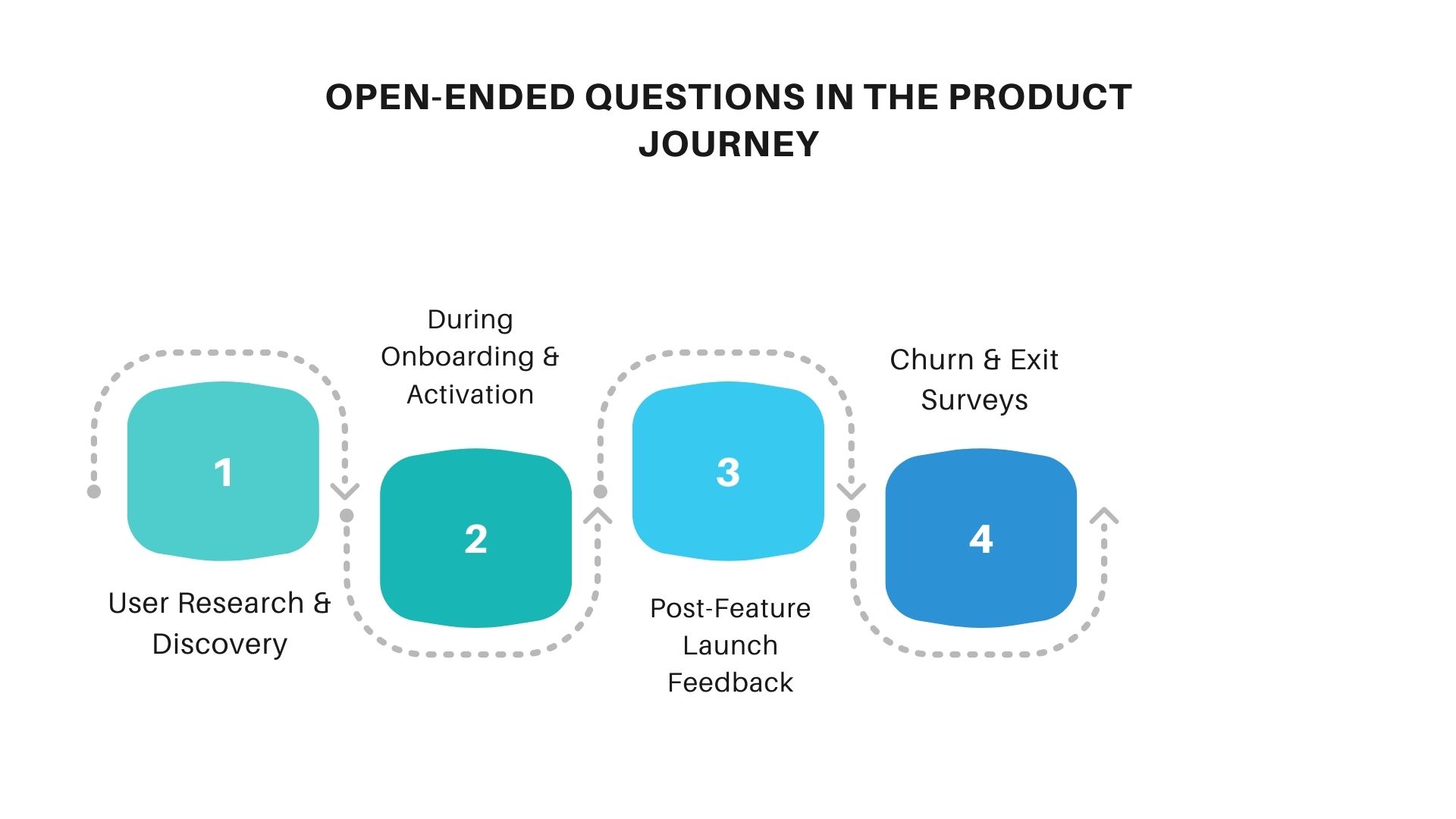
If you’ve ever felt like your feedback forms, meetings, or class discussions aren’t giving you much to work with, it’s probably time to ask better questions. Not just more questions, but better questions.
Open-ended questions are a great way to collect detailed, honest feedback, whether you're doing user research, conducting a survey, or reviewing NPS responses.
Unlike a simple “yes” or “no” closed question, an open-ended question invites a free-form answer, encouraging respondents to express their thoughts and feelings in their own words.
In this article, we’ll explore what open-ended questions are, when and how to ask them, and share question examples that will help you improve your product and survey questions.
Open-ended questions allow people to share their thoughts and feelings in their own words. Unlike a simple ‘yes’ or ‘no’, these types of questions require the respondent to give a free-form answer, which leads to more depth, context, and value.
Example:
Unlike close-ended questions, open-ended ones don’t restrict respondents to a short phrase or single-word answer, they allow fuller response and deeper insights.
Let's just say it's an excellent way of understanding other people's perspectives. Additionally, you might learn more about people or their needs by listening to their candid responses when you allow them to talk freely.
In fact, a study found that using open-ended questions in conversations led to a 37% increase in task performance compared to closed questions. Another study showed that in medical interviews, open-ended questions helped gather significantly more information from patients. We'll discuss more about what you stand to gain by using open-ended questions.
Every open-ended question you ask opens the door to qualitative insights. Whether it's a user interview or a follow-up to an NPS score, these types of questions serve several key purposes:
Open-ended questions also help you validate assumptions and ask better follow-ups that improve your surveys and team meetings alike.
Open-ended questions are particularly effective at several touchpoints:

Asking the right open-ended questions at the right time leads to actionable feedback that metrics alone can't provide.
The difference between closed and open-ended questions is more than format. It's about depth. Closed questions give you quick, quantitative data. Open-ended questions give you insight.
Closed QuestionOpen-Ended AlternativeDo you like the feature?What do you like or dislike about the feature?Is the dashboard easy to use?How do you use the dashboard in your workflow?Would you recommend us?Why did you choose that score?
Pro Tip: Use closed-ended questions for metrics, and open-ended ones for context, especially in NPS surveys.
Open-ended questions give you the chance to go beyond checkboxes and capture specific information in the respondent’s own words.

These types of questions help reveal the context behind satisfaction scores and reviews. Here are 5 question examples you can use to follow up on NPS or multiple-choice questions:
Crafting & using open-ended questions during user research is the most challenging. People often tend to get excited about their products and end up asking leading questions or just making assumptions. This should be avoided at all costs when conducting user interviews & user research.
In The Mom Test, Rob Fitzpatrick shares a relatable story: you're chatting with a friend about your product idea, and they say, "Yeah, that sounds great!" But deep down, you know they’re just being polite. Rob puts it this way:
"If you ask someone whether your business is a good idea, you're asking them to lie to you."
This is why asking better, open-ended questions is so important. Instead of fishing for compliments or vague opinions, you focus on what people actually do. Ask about their past behavior, their real problems, and the last time they dealt with a similar issue. These stories give you much more clarity than a simple "I like it."
Whether you're exploring a pain point or testing a new idea, the questions below can uncover valuable insights you might otherwise miss.
If you want to boost employee engagement and create a supportive work environment, you need to use open-ended questions in your one-on-ones, team meetings, and company surveys.
These questions give employees space to speak honestly and offer new ideas. Here are 5 open questions that are very effective:
Great open-ended questions prompt meaningful answers. Here are a few ways to ask the right questions:
These words naturally lead to detailed responses and dialogue. Avoid leading with "Do," which tends to invite closed responses.
Instead of: "Do you think our app is amazing?" Try: "What do you think about using our app so far?"
Pairing these types of questions gives you both quantitative and qualitative insights.
Open-ended questions allow your users to share real thoughts, not just select from pre-defined answers. They help you get better at asking the right questions, run more effective surveys, and gather actionable insights that improve customer satisfaction.
Whether you're preparing survey questions, doing user research, or planning a team meeting, asking more open-ended questions is a simple but powerful shift.
Productlogz helps SaaS teams collect open-text responses, run surveys, and analyze open-ended feedback with ease. Ready to ask better and build smarter? Try Productlogz today.
Easily collect & Prioritize feedback from users. Build & Ship features that Users actually want.